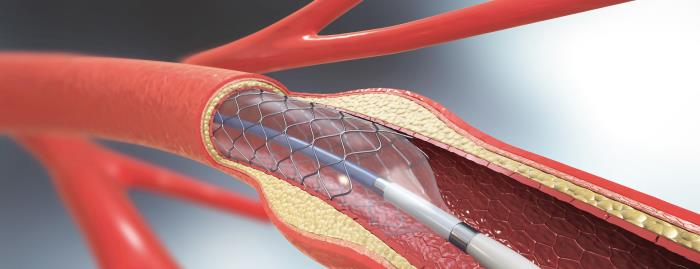Age plays a significant role in coronary angioplasty outcomes, as the physiological changes associated with aging can influence both the procedure and recovery. While angioplasty is a highly effective treatment for restoring blood flow in blocked arteries, older patients often face unique challenges due to age-related cardiovascular and systemic health changes..
Understanding the Physiological Changes in Aging Hearts
As the body ages, the cardiovascular system undergoes several changes that can impact heart health and vascular function. Aging arteries often become stiffer and less elastic due to the accumulation of collagen and reduced elastin, which can lead to increased blood pressure and reduced responsiveness during angioplasty. Additionally, the heart muscle may show signs of diminished efficiency, complicating recovery from procedures like angioplasty.
Why Older Patients May Face Higher Procedure Risks
Older patients are more likely to have pre-existing conditions such as hypertension, diabetes, or kidney disease, which can increase the risks associated with angioplasty. These comorbidities, combined with reduced organ function, make older individuals more susceptible to complications like bleeding, infection, or contrast dye reactions. Physicians must carefully assess these risks to determine the safest treatment approach.

Differences in Recovery Time Based on Age
Recovery time after angioplasty varies significantly between younger and older patients. Younger patients often experience faster healing and fewer complications, enabling them to resume normal activities sooner. In contrast, seniors may require longer recovery periods due to slower tissue healing, reduced physical resilience, and the presence of other health conditions that complicate the rehabilitation process.
Success Rates of Angioplasty in Younger vs. Older Patients
Despite the challenges, angioplasty remains a successful intervention across age groups. Studies indicate that success rates are generally high for both younger and older patients, though older individuals may have slightly lower rates due to the complexity of their cases. Advancements in medical technology and personalized care have helped close this gap, improving outcomes for senior patients undergoing angioplasty.
Impact of Comorbidities on Angioplasty Outcomes in Seniors
Older adults often present with multiple comorbidities, such as diabetes, chronic kidney disease, or prior heart conditions, which can complicate angioplasty outcomes. These conditions increase the risk of post-procedure complications and may require additional medical management. Comprehensive preoperative evaluations are essential to identify and mitigate these risks.
Challenges with Artery Elasticity in Aging Patients
One of the most significant challenges in performing angioplasty on older patients is dealing with reduced artery elasticity. Aging arteries are more prone to calcification, which makes it harder to insert and expand stents effectively. Additionally, stiffer arteries are at a higher risk of tearing or other complications during the procedure. Innovations in stent design and imaging technologies are helping to address these issues, improving the safety and efficacy of angioplasty for older adults.
How Age Influences the Risk of Restenosis After Angioplasty
Age is a significant factor in the risk of restenosis (re-narrowing of arteries) following angioplasty. Older patients often have more fragile and calcified arteries, which can influence the healing process and make them more prone to restenosis. However, advancements like drug-eluting stents have significantly reduced this risk in aging populations, ensuring better outcomes.

The Role of Medications in Supporting Elderly Patients Post-Angioplasty
Medications play a vital role in the recovery process for elderly patients after angioplasty. Antiplatelet drugs, cholesterol-lowering medications, and blood pressure management therapies help prevent complications such as blood clots and reduce the likelihood of restenosis. Adjusting medication dosages based on kidney function and other age-related factors is critical to ensure safety and effectiveness.
Complications More Common in Elderly Angioplasty Patients
Elderly patients undergoing angioplasty are at a higher risk of complications such as bleeding, vascular injury, kidney issues due to contrast dye, and slower wound healing. Pre-existing conditions like diabetes, hypertension, and reduced renal function can exacerbate these risks, necessitating close monitoring during and after the procedure.
How Cardiologists Tailor Angioplasty for Older Adults
Cardiologists customize angioplasty for older adults by considering factors such as frailty, existing comorbidities, and functional status. Minimally invasive techniques, the use of smaller catheters, and careful selection of stents help reduce procedural risks and improve recovery outcomes for elderly patients.
Importance of Pre-Procedure Assessments in Aging Patients
Thorough pre-procedure evaluations are essential for aging patients to assess overall health and procedural risks. These assessments often include cardiac imaging, blood tests, and evaluations of kidney function. Identifying potential complications beforehand allows for better planning and improved safety during angioplasty.
Long-Term Benefits of Angioplasty for Different Age Groups
Despite age-related risks, angioplasty offers significant long-term benefits for older adults, such as reduced chest pain, improved physical activity levels, and enhanced quality of life. With proper management, elderly patients can experience outcomes comparable to younger individuals.
Differences in Lifestyle Adjustments Based on Age Post-Procedure
Lifestyle modifications after angioplasty vary based on age. Older adults may focus more on low-impact activities, dietary changes, and managing chronic conditions, while younger patients may prioritize a more active recovery. Tailored rehabilitation programs help patients across all age groups achieve optimal health.
The Role of Rehabilitation in Improving Outcomes for Older Adults
Cardiac rehabilitation is especially beneficial for elderly patients, as it helps restore mobility, improve cardiovascular fitness, and reduce the risk of future cardiac events. Supervised programs provide a safe environment for older adults to gradually rebuild strength and confidence.
How Advanced Techniques Are Benefiting Aging Populations
Innovations such as drug-eluting stents, robotic-assisted procedures, and imaging-guided angioplasty have significantly improved outcomes for older adults. These techniques minimize trauma, enhance precision, and reduce the risk of complications, making angioplasty safer and more effective for aging populations.
Emotional and Psychological Recovery in Elderly Patients
Emotional recovery is as important as physical recovery, especially for elderly patients who may feel anxious about undergoing angioplasty. Support from caregivers, counseling, and stress management techniques can help older adults regain confidence and emotional well-being after the procedure.
When Age Should Not Be a Barrier to Angioplasty
Age alone should not be a deciding factor when considering angioplasty. With advances in technology and personalized care, many elderly patients can undergo the procedure with minimal risks and significant benefits. A comprehensive assessment ensures that the decision is based on overall health rather than chronological age.
Encouraging Research on Outcomes Across All Age Groups
Recent studies show that outcomes for elderly patients undergoing angioplasty are increasingly positive, thanks to improved techniques and better post-operative care. Research continues to focus on optimizing strategies for aging populations, ensuring equitable access to life-saving interventions.
Understanding the Causes of Coronary Artery Disease
Discover the underlying causes of coronary artery disease. This blog post explores the major risk factors such as high cholesterol, hypertension, and lifestyle choices, helping readers understand how these contribute to the development of CAD and the importance of prevention and early detection.
Risks and Complications of Coronary Angioplasty
Understand the potential risks and complications associated with coronary angioplasty. While angioplasty is an effective procedure for treating blocked arteries, it carries risks like bleeding, infection, and re-blockage of arteries. This article outlines common complications and how they are managed during and after the procedure.
Conclusion: Achieving Positive Outcomes Regardless of Age
Age should not deter patients or physicians from considering angioplasty when necessary. By focusing on tailored care, thorough assessments, and advanced techniques, older adults can achieve excellent outcomes. With proper post-operative support and lifestyle adjustments, angioplasty can significantly enhance the quality of life for aging individuals.
Best Coronary Angioplasty in India
The Best Coronary Angioplasty in India is a minimally invasive procedure that helps restore blood flow to the heart by widening blocked arteries, improving cardiovascular health and reducing chest pain.
Best Coronary Angioplasty Hospitals in India
The best coronary angioplasty hospitals in india offer state-of-the-art facilities and highly skilled cardiology teams, ensuring comprehensive pre- and post-operative care for effective treatment outcomes.
Coronary Angioplasty Cost in India
The coronary angioplasty cost in india is affordable, with transparent pricing and flexible options, making high-quality cardiovascular care accessible for patients.
Best Coronary Angioplasty Surgeons in India
The Best Coronary Angioplasty Surgeons in India are experienced specialists in interventional cardiology, dedicated to providing personalized and effective treatment for each patient.
FAQs
Is coronary angioplasty safe for elderly patients?
Yes, with modern techniques and careful planning, angioplasty is safe for elderly patients, even those with pre-existing conditions.
How does age affect the recovery process after angioplasty?
Recovery may take longer in elderly patients due to slower healing and the presence of comorbidities, but rehabilitation programs can help improve outcomes.
Do older patients have lower success rates for angioplasty?
While older patients may face higher risks, success rates for angioplasty remain high, especially with advanced techniques and post-operative care.
What are the risks of angioplasty for aging patients with multiple health conditions?
Risks include bleeding, kidney issues, and vascular complications, but these can be managed with proper pre- and post-operative care.
Are there alternative treatments to angioplasty for seniors?
In some cases, medications or non-invasive procedures like enhanced external counterpulsation (EECP) may be considered for seniors unable to undergo angioplasty.